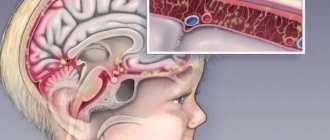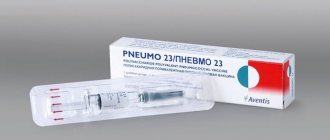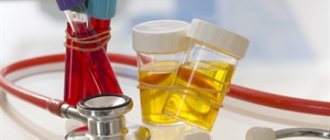Gardasil - Vaccine for the prevention of human papillomavirus infection types 6, 11, 16 and 18 Registration certificate No.: LS-002293 dated November 24, 2006 Trade name: Gardasil Clinical and pharmacological group: Vaccine for the prevention of diseases caused by the papillomavirus human Dosage form: Suspension for intramuscular administration, opaque, white Country of origin: Merck Sharp&Dohme, BV, Netherlands Preliminary examination: Not required Cost of the vaccine: 10,500 rubles (examination before vaccination is additionally paid) Applicable: For adults and children Dispensing conditions from pharmacies: by prescription
Leave a request for vaccination. Our manager will coordinate an appointment time convenient for you.
Sign up for vaccination
Sign up by phone
+7 (495) 788-000-2
DESCRIPTION OF THE MEDICINE
Quadrivalent vaccine against human papillomavirus (HPV). It is a sterile suspension for intramuscular administration prepared from a mixture of highly purified virus-like particles (VLPs) of the recombinant main capsid protein (L1) of HPV types 6, 11, 16 and 18. L1 proteins are produced by separate fermentation in recombinant Saccharomyces cerevisiae CANADE 3C-5 (Strain 1895) and form VHF by self-assembly. VLPs for each type are purified and adsorbed on an aluminum-containing adjuvant (amorphous aluminum hydroxyphosphate sulfate).
Carrying out a full course of vaccination leads to the formation of specific antibodies to four types of HPV - 6, 11, 16 and 18 - in a protective titer in more than 99% of vaccinated people for a period of at least 36 months in all age groups.
The vaccine is almost 100% effective in preventing genital cancers, precancerous epithelial dysplasias and genital warts induced by HPV types 6, 11, 16 and 18.
special instructions
The effectiveness and safety of Gardasil when administered subcutaneously or intradermally has not been studied and these routes of administration are not recommended.
Gardasil is not intended to treat cervical, vulvar or vaginal cancer, CIN, VIN or VaIN, or active condylomatosis. The drug does not protect against diseases caused by other types of HPV and other etiologies.
As with any vaccine, it is always necessary to have appropriate medications available to immediately relieve an anaphylactic reaction.
The decision to administer the drug or to delay vaccination due to current or recent illness accompanied by fever depends largely on the etiology of the disease and severity. Mild fever and mild upper respiratory tract infection are usually not contraindications for vaccination.
The decision to administer the drug or to delay vaccination due to current or recent illness accompanied by fever depends largely on the etiology of the disease and severity. Mild fever and mild upper respiratory tract infection are usually not contraindications for vaccination.
Gardasil vaccine should be administered with caution to patients with thrombocytopenia and any bleeding disorders, as bleeding may occur in such individuals after IM injection.
Health care personnel must provide all necessary information about vaccination and the vaccine to patients, parents and caregivers, including information about the benefits and risks involved.
Vaccines should be warned about the need to protect against pregnancy during the course of vaccination, about the need to report any adverse reactions to the doctor or nurse, and that vaccination does not replace or cancel routine screening examinations. To achieve effective results, the vaccination course must be completed in full, unless there are contraindications.
There are no data evaluating the safety and effectiveness of Gardasil vaccine in adults over 26 years of age.
How to reduce the risk of HPV infection?
The risk of HPV infection is reduced only by sexual abstinence or mutually monogamous relationships with an uninfected sexual partner. However, if the partner has been sexually active in the past, monogamy also cannot protect against infection. A condom does not protect against HPV infection, since infection occurs through contact with the skin and genitals of a partner. However, it has been observed that using a condom reduces the risk of cervical cancer caused by HPV.
But only vaccination completely protects against the risk of HPV and cervical cancer.
COMPOUND
0.5 ml (one dose) contains:
Active components
- L1 proteins of human papillomavirus - 120 μg;
- incl. type 6 - 20 mcg;
- type 11 - 40 mcg;
- type 16 - 40 mcg;
- type 18 - 20 mcg;
Excipients
- Aluminum in the form of aluminum hydroxyphosphate-sulfate amorphous adjuvant (225 mcg);
- Sodium chloride (9.56 mg);
- L-histidine (780 mcg);
- Polysorbate 80 (50 mcg);
- Sodium borate (35 mcg);
- Water d/i.
PACKAGING FORM
- 0.5 ml - 3 ml bottles (1) - cardboard packs;
- 0.5 ml - 3 ml bottles (10) - cardboard packs;
- 0.5 ml - disposable syringes with a volume of 1.5 ml (1) with a device for safe administration (or without it), complete with 1 or 2 sterile needles (or without needles) - contour cell packaging (1) - cardboard packs;
- 0.5 ml - disposable syringes with a volume of 1.5 ml (6) with a device for safe administration (or without it), complete with 6 or 12 sterile needles (or without needles) - contour cell packaging (1) - cardboard packs.
INDICATIONS
Prevention of the following diseases caused by human papillomavirus types 6, 11, 16 and 18 in children and adolescents aged 9 to 17 years and in young women aged 18 to 26 years:
- Cancer of the cervix, vulva and vagina;
- Genital condylomas (condiloma acuminata).
Prevention of precancerous dysplastic conditions in children and adolescents aged 9 to 17 years and in young women aged 18 to 26 years:
- Cervical adenocarcinoma in situ (AIS);
- Cervical intraepithelial neoplasia grades 2 and 3 (CIN 2/3);
- Vulvar intraepithelial neoplasia grades 2 and 3 (VIN 2/3);
- Vaginal intraepithelial neoplasia grades 2 and 3 (VaIN 2/3);
- Cervical intraepithelial neoplasia grade 1 (CIN 1).
Table of contents:
- What is human papillomavirus?
- How are HPVs transmitted and how common are they?
- How is HPV infection diagnosed?
- How is HPV infection treated?
- What is the connection between HPV infection and cervical cancer?
- How to reduce the risk of HPV infection?
- What is the Gardasil vaccine?
- Who is recommended for Gardasil vaccination?
- Should boys be vaccinated?
- What are the contraindications to HPV vaccination?
- Is it possible to get vaccinated during pregnancy and breastfeeding?
- How common are reactions to Gardasil vaccination?
- How does Gardasil interact with other vaccines?
- Vaccination procedure
- How effective is the Gardasil vaccine?
- Do I need to do a PCR or Pap test before vaccination?
- How safe is the HPV vaccination?
Use during pregnancy and breastfeeding
Category B. Adequate and strictly controlled studies of the safety of Gardasil during pregnancy have not been conducted. The potential effects of the vaccine on reproductive function in women and on the fetus have not been studied.
There is no evidence that Gardasil vaccine has adverse effects on fertility, pregnancy, or the fetus.
The Gardasil vaccine can be administered to women during lactation (breastfeeding).
Dosage
For children and adolescents aged 9 to 17 years and young women aged 18 to 26 years
a single dose of the vaccine is 0.5 ml.
The recommended course of vaccination consists of 3 doses and is carried out according to the scheme (0-2-6 months): first dose - on the appointed day; second dose – 2 months after the first; third dose – 6 months after the first.
An accelerated vaccination schedule is allowed, in which the second dose is administered 1 month after the first vaccination, and the third - 3 months after the second vaccination.
If the interval between vaccinations is violated, the vaccination course is considered completed if 3 vaccinations are carried out within 1 year.
Rules for administering the vaccine
Single dose vials of vaccine:
Draw 0.5 ml of the suspension from the vial with a single dose of the vaccine with a sterile needle into a disposable syringe that does not contain preservatives, antiseptics and detergents. Administer the entire dose. Throw away the bottle with any remaining vaccine.
Syringes with a single dose of vaccine:
Inject the entire contents of the syringe completely.
Disposable, sterile, pre-filled single dose syringes complete with safety device:
The included needle should be used to administer the vaccine. If it is necessary to use a different needle, make sure that the needle is securely attached to the syringe and that its length does not exceed 2.5 cm, which is a necessary condition for the correct operation of the protective device.
Remove the cap from the end of the syringe. By pressing both anti-rotation protrusions, secure the syringe and attach the Luer needle by turning clockwise. Remove the protective cap from the needle.
When performing an injection, as indicated above, you should press the plunger, holding the syringe firmly under the finger protrusions and inject the entire dose. The needle guard will not work unless the entire dose is injected. Remove the needle. Release the plunger and allow the syringe to move upward until the entire needle is completely covered. To document vaccinations, peel off the removable labels by slowly pulling them out. After completing the procedure, throw the syringe into a sharps container.
Special instructions for use
- The vaccine is ready for use; no additional dilution or resuspension is required. Before use, the vial/syringe with the vaccine is shaken until a homogeneous cloudy suspension is obtained. Loss of homogeneity, the appearance of included particles and changes in the color of the suspension indicate the unsuitability of the vaccine;
- The syringe filled with the vaccine is for one time use only and for one person only;
- The opening of the bottles and the vaccination procedure are carried out in strict compliance with the rules of asepsis and antiseptics. The injection site is treated with 70% alcohol before and after the injection.
SIDE EFFECTS
After administration of the vaccine, local and general reactions may develop in some cases: according to clinical studies, the following adverse events occurred with a frequency of at least 1% and more often than in the placebo group.
Local reactions
≥1% - redness, swelling, pain and itching at the injection site. The duration of reactions does not exceed 5 days and does not require drug therapy.
General reactions
Considering the theoretical possibility of developing immediate allergic reactions in particularly sensitive individuals, after administration of the vaccine it is necessary to provide medical observation for 30 minutes.
Vaccination should be carried out in a medical facility equipped with anti-shock therapy.
Should boys be vaccinated?
The vaccine is also effective for boys, but experts debate whether widespread vaccination is justified, weighing the cost of the vaccine against the incidence of penile and anal cancer. In 2012-2014 studies in the United States, HPV vaccination was also offered to boys. We recommend, if possible, that boys be vaccinated against HPV, as the prevalence of anal cancer is growing, and genital warts are also not harmless and can lead to delayed and painful urination.
CONTRAINDICATIONS
- hypersensitivity to the active components and fillers of the vaccine;
- If symptoms of hypersensitivity to Gardasil occur, administration of a subsequent dose of the vaccine is contraindicated.
Relative contraindications: bleeding disorders due to hemophilia, thrombocytopenia or while taking anticoagulants. If it is necessary to use a vaccine in this category of patients, the potential benefits of vaccination and the risks associated with it should be assessed. When vaccinating in such cases, it is necessary to take measures to reduce the risk of post-injection hematoma formation.
Drug interactions with other drugs
Clinical trial results indicate that Gardasil vaccine can be administered at the same time (at a different site) with recombinant hepatitis B vaccine.
The use of analgesics, anti-inflammatory drugs, antibiotics and vitamin preparations did not affect the effectiveness, immunogenicity and safety of the vaccine.
Hormonal contraceptives, topical inhaled and parenteral corticosteroids did not affect the immune response to Gardasil vaccines.
There are no data on the simultaneous use of systemic immunosuppressants and the Gardasil vaccine.
How effective is the Gardasil vaccine?
It is 100% effective in preventing diseases caused by the four types of HPV included in it, if the woman has not yet been infected with them. For women who have already been infected, the effectiveness is somewhat less.
It is important that pre-existing HPV infections cannot be cured by vaccination. More importantly, approximately 30% of cervical cancers are caused by rarer types of HPV and therefore cannot be prevented by vaccination. Therefore, vaccinated girls and women should, nevertheless, regularly conduct a PAP test.







